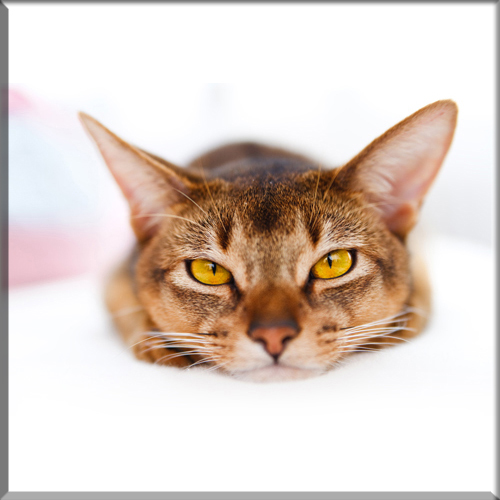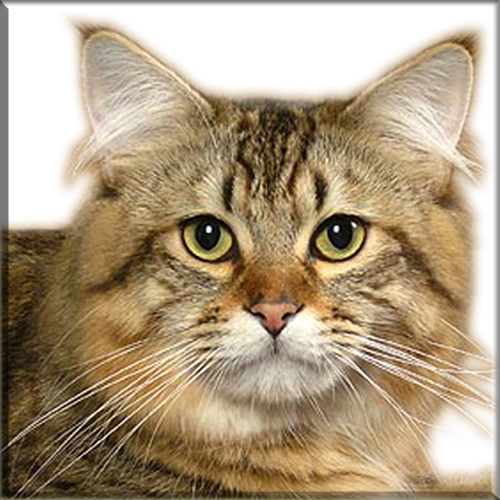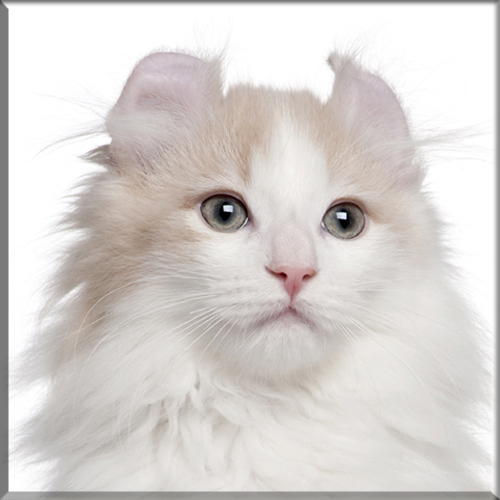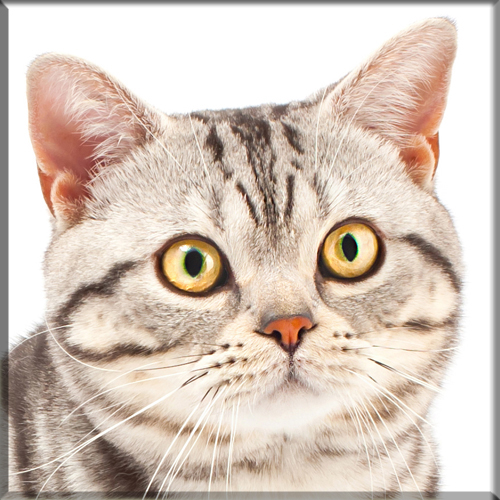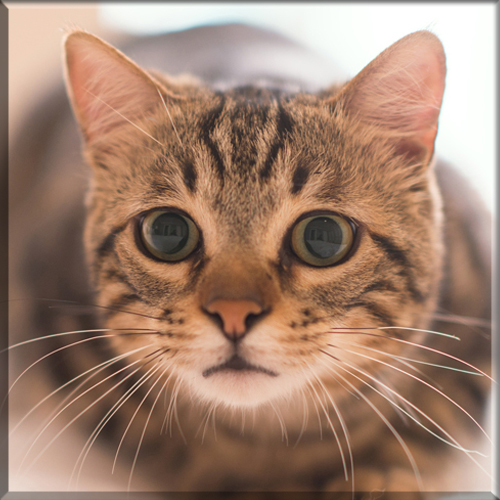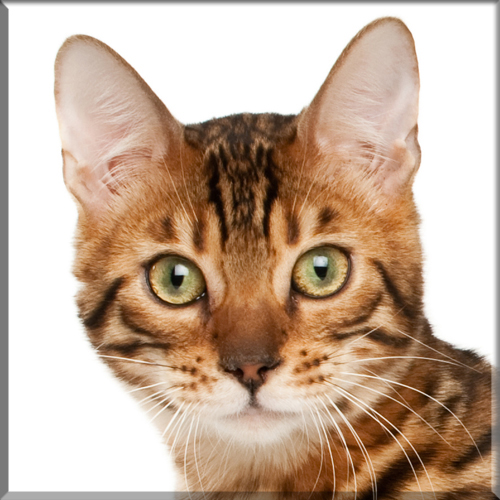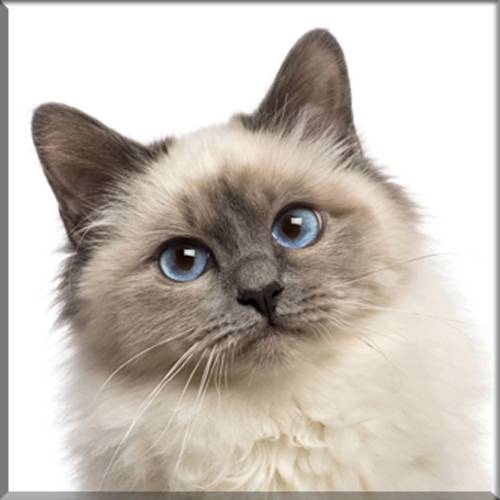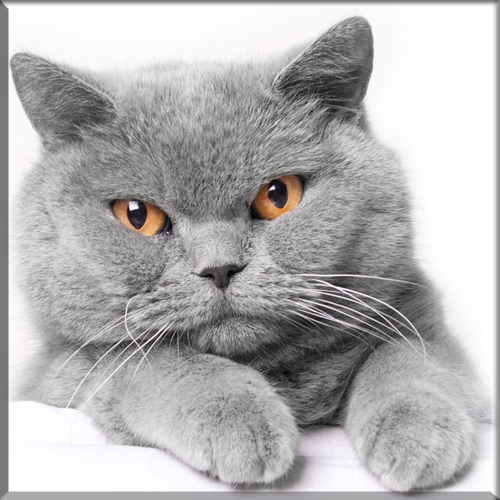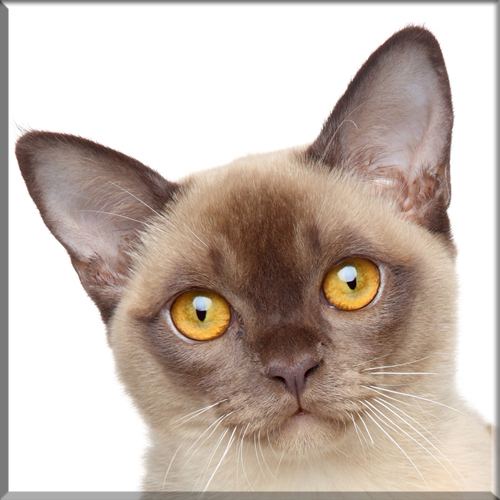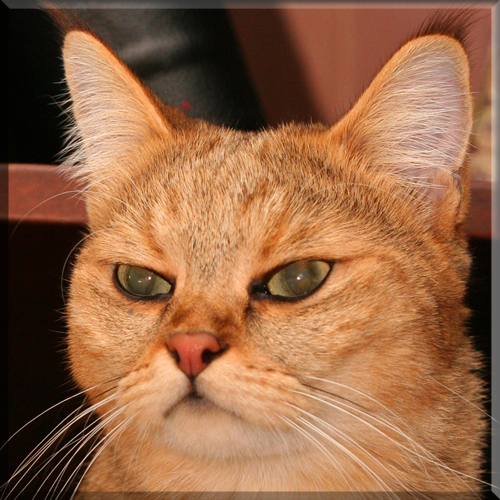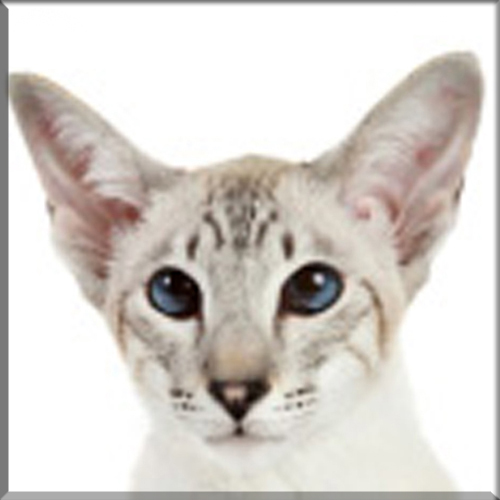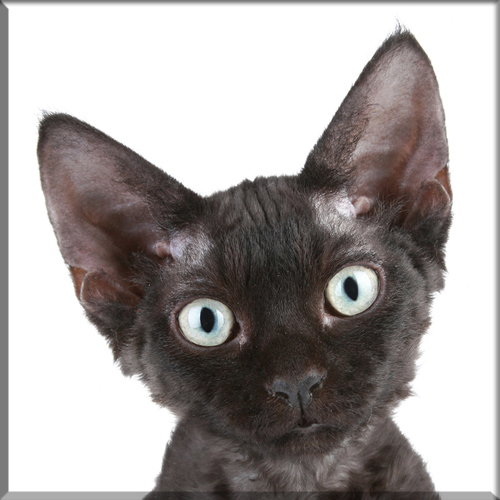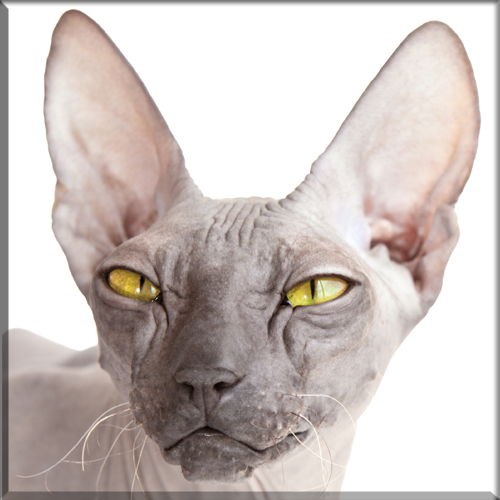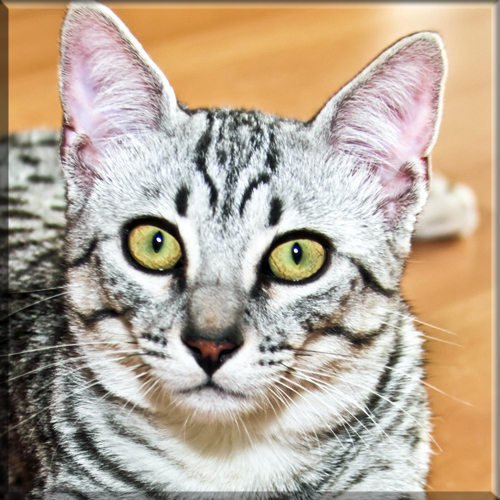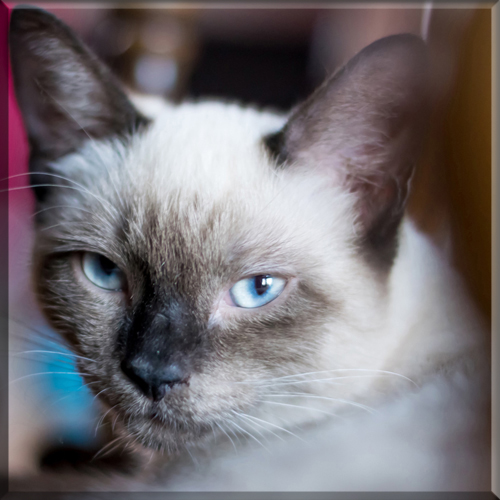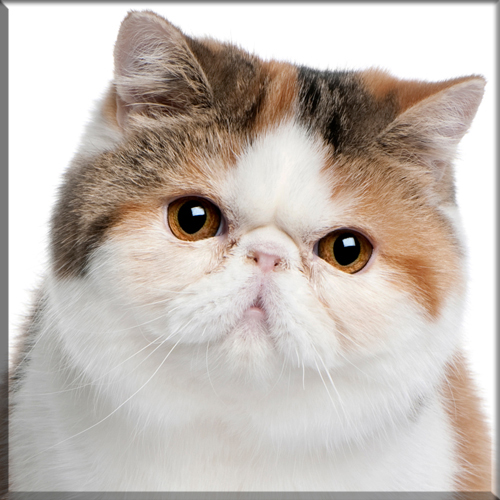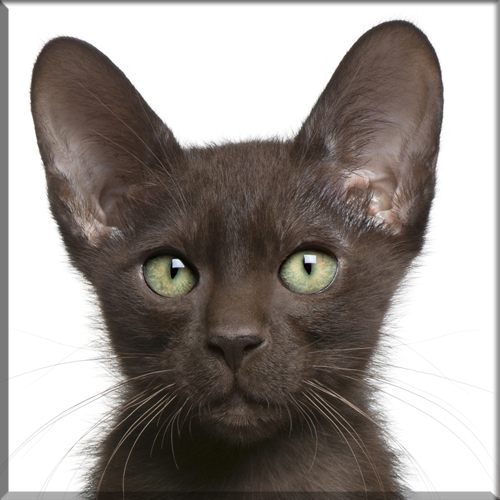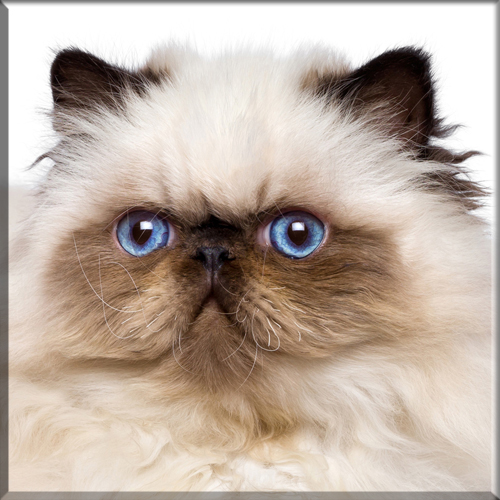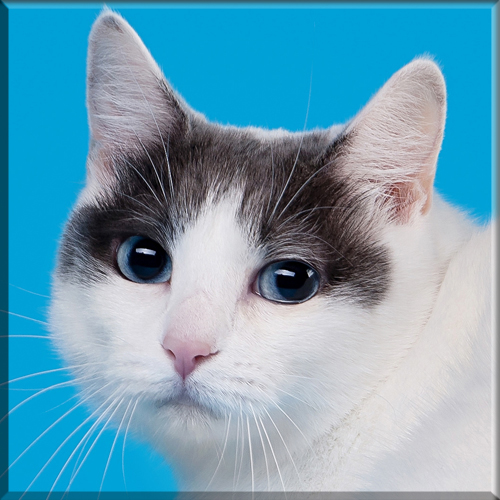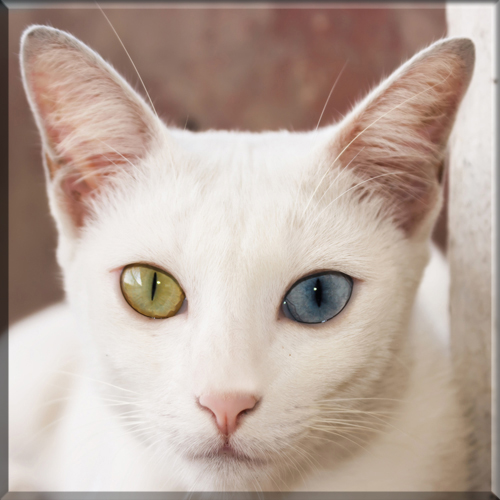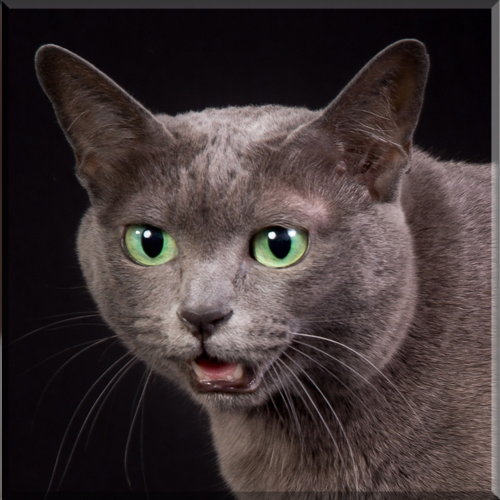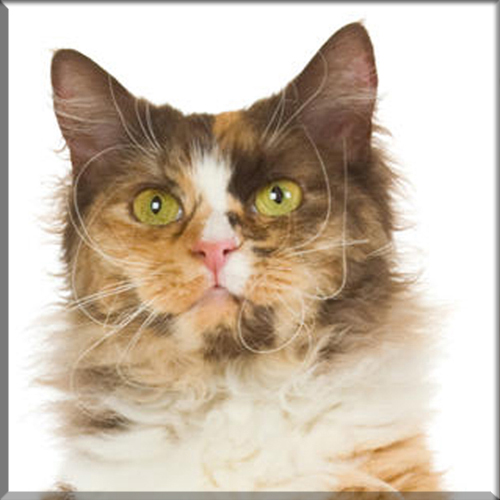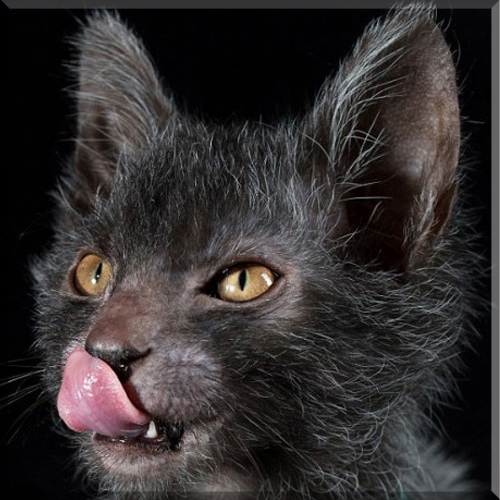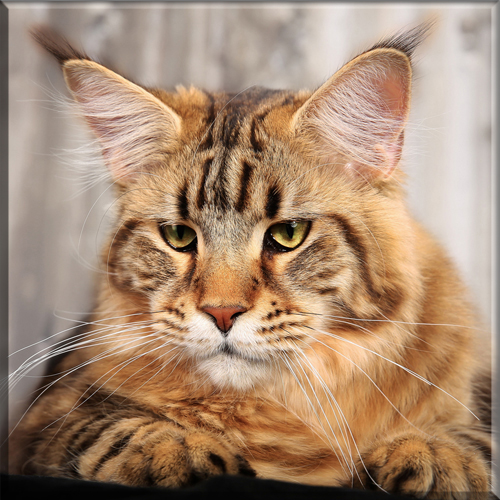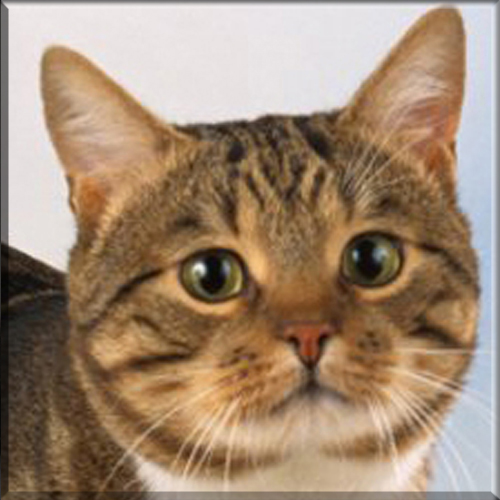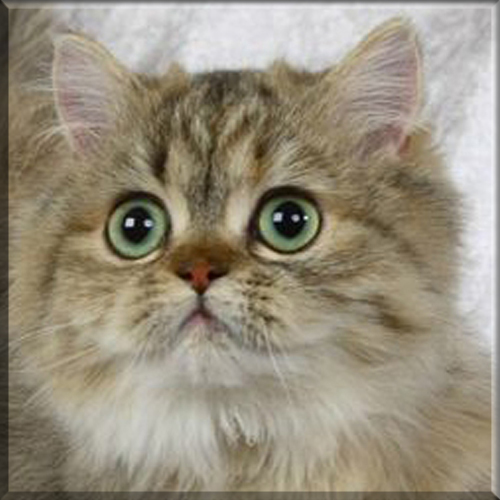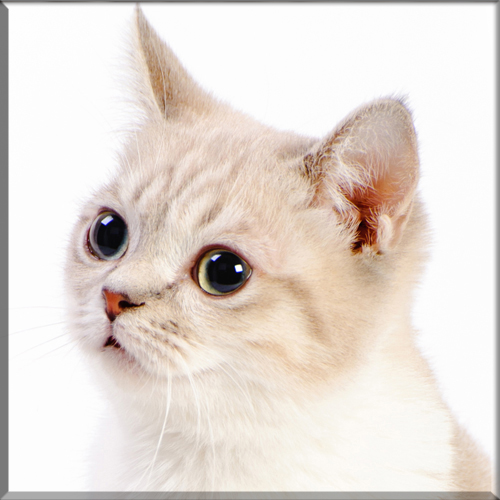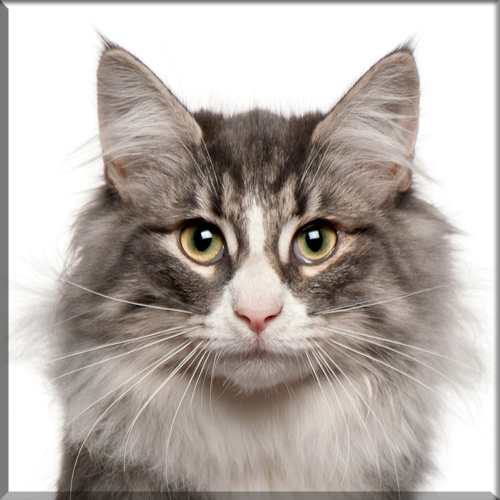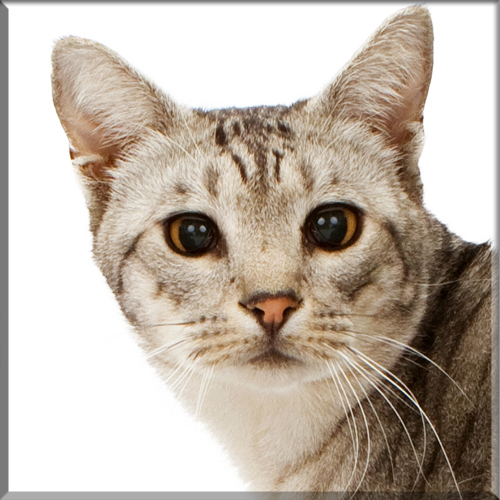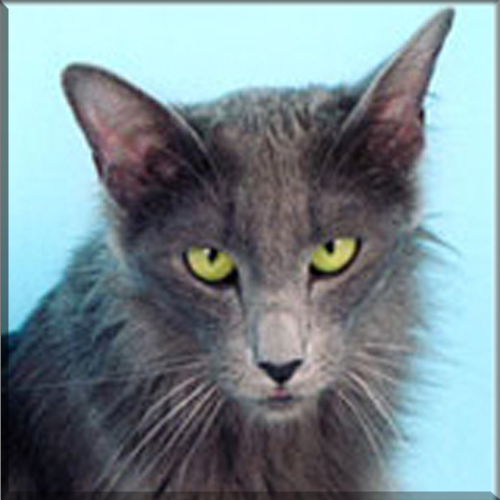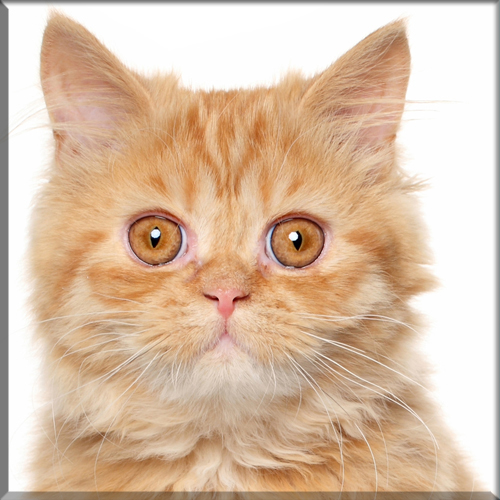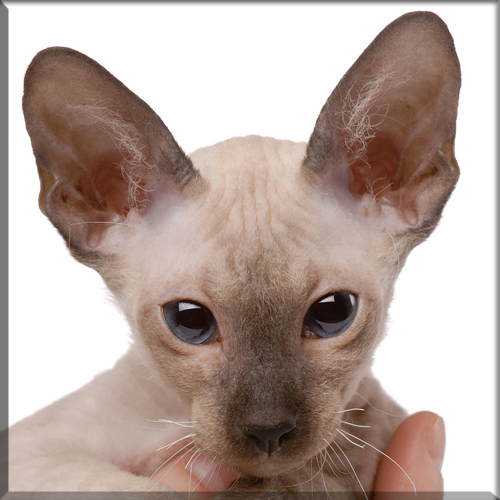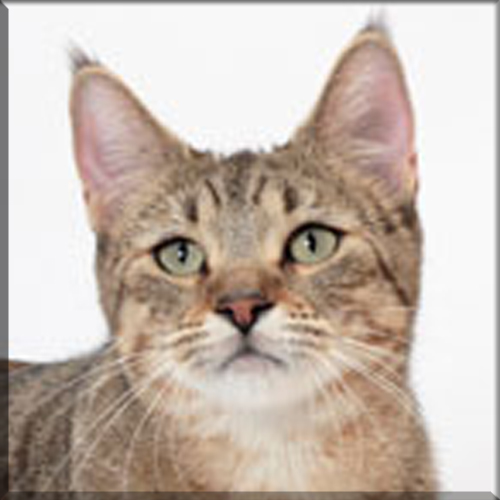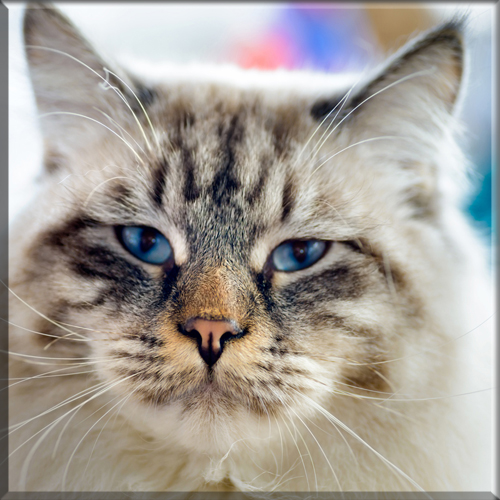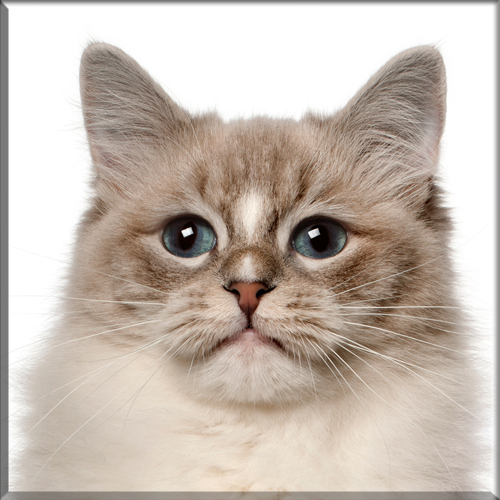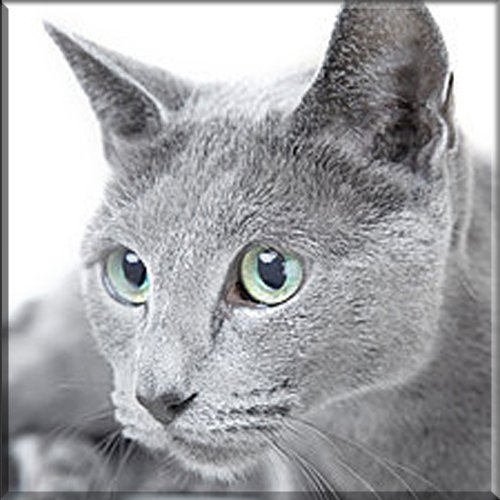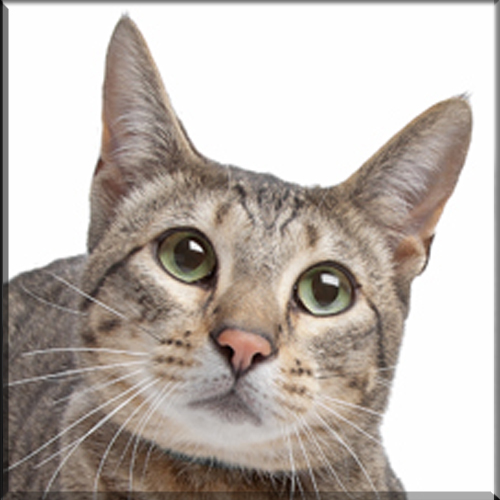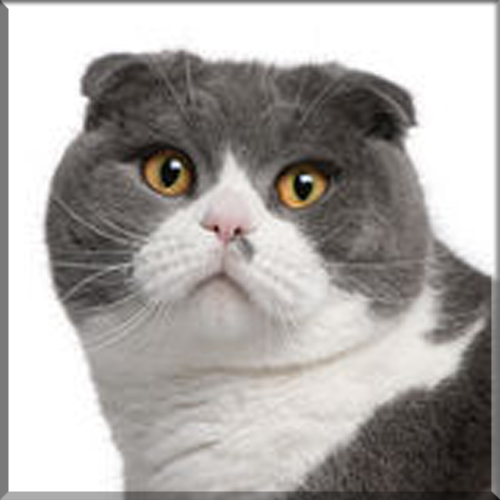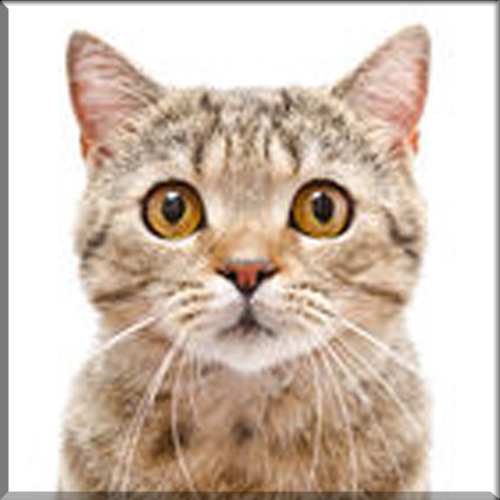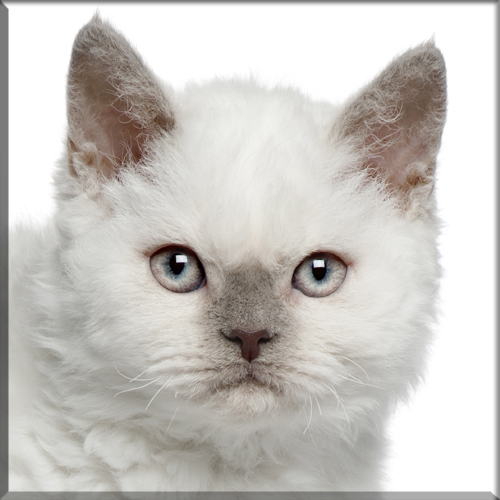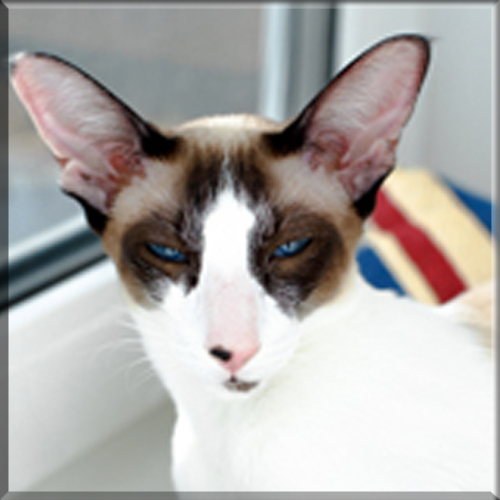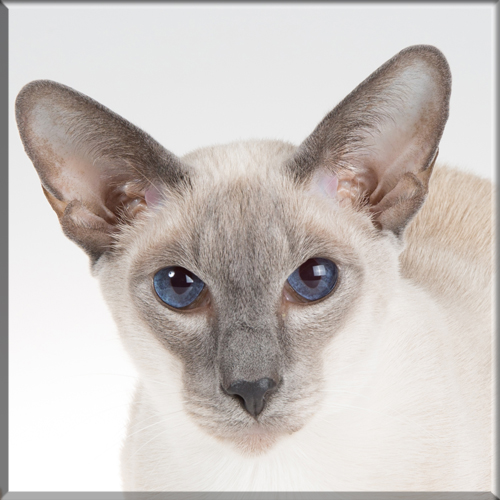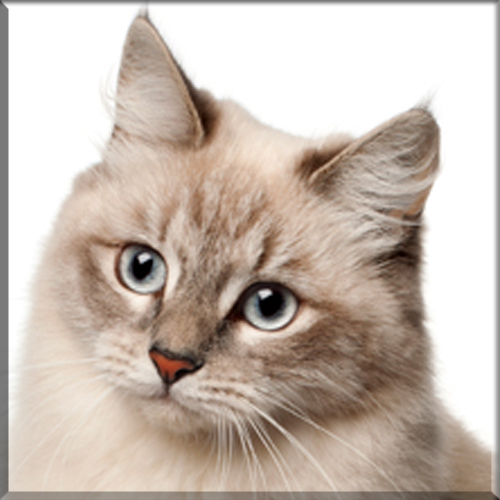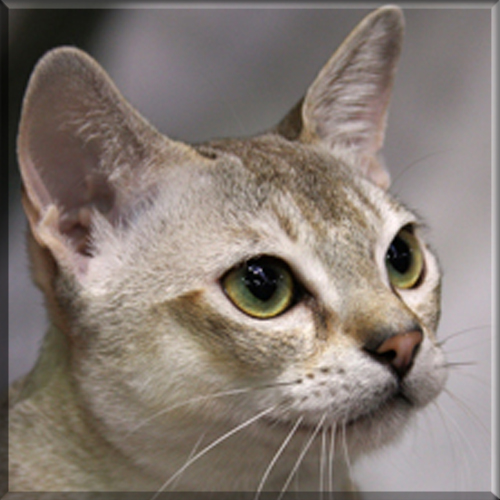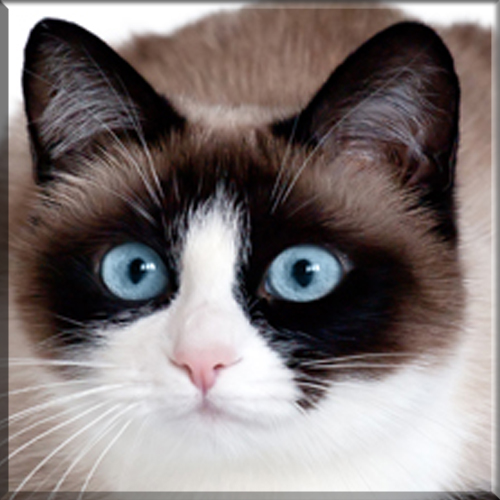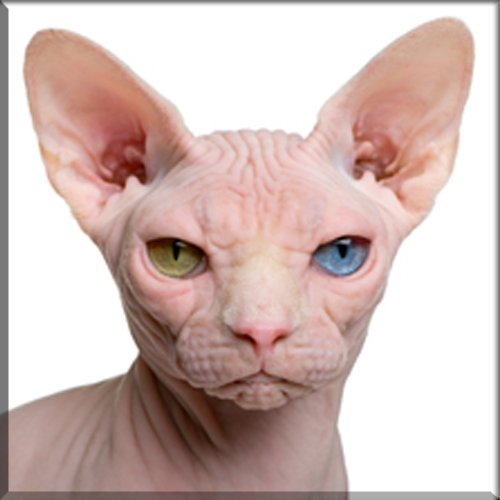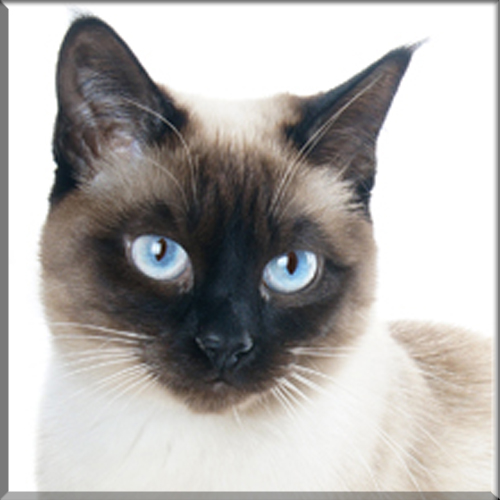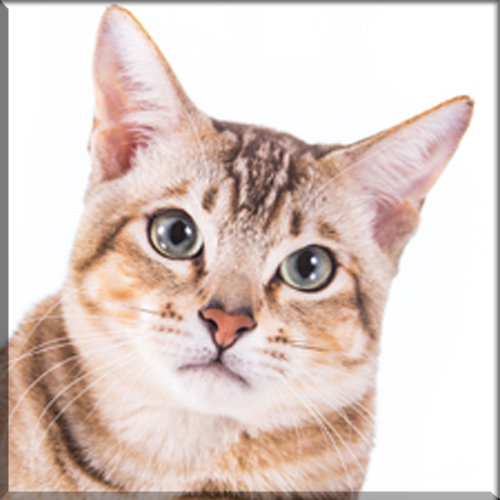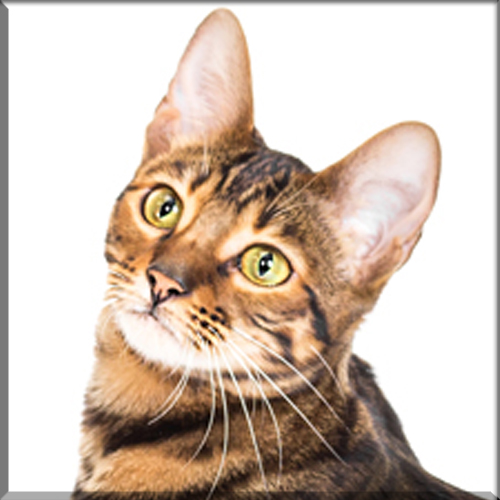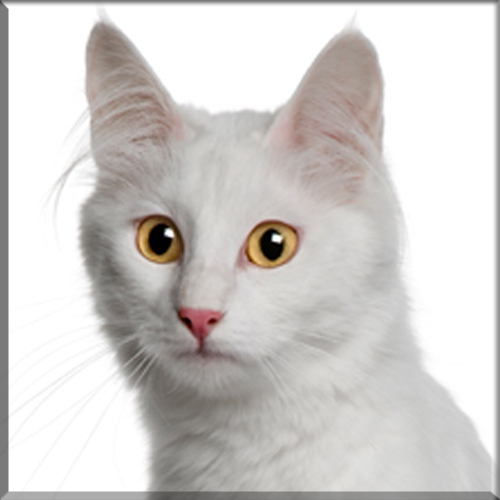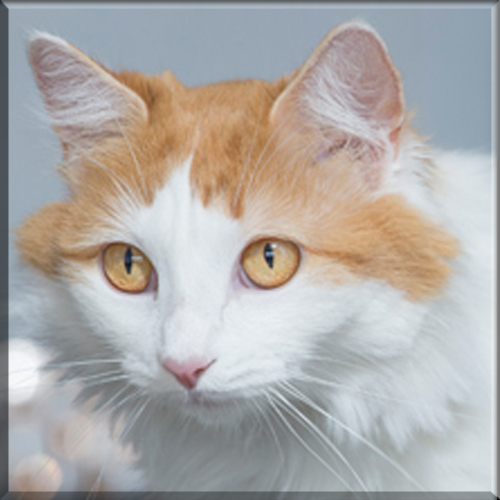British Shorthair

Appearance and features:
British Shorthairs have a solid and muscular build, with a short dense coat that comes in many color patterns. These chubby-faced teddy bears with large round eyes, are a sturdy, dense-coated, medium sized purr cat.
Size:
A medium sized solid cat ranging from 9 to 18 pounds. They are slow maturing, the British Shorthair will reach their full size around three years of age.
Family:
Originally brought to Rome when the Romans invaded Britain, they were further developed for pedigree breeding in Victorian England. Crossed with Persians to create the British Longhair during World War I, they almost died out during World War II due to being victims of the food shortage. After the 2nd World War, the breed was revived from foundation lines by crossing domestic shorthair cats back to Russian Blues and Persians, and other cats that had the British Shorthair traits.
Coloring:
The classic “British Blue” still remains the most popular color, a solid blue-gray with copper eyes. However, the breed has also been developed in a wide range of other colors and patterns, including tabby patterns and colorpoint.
Origin:
The British Shorthair is one of the most ancient cat breeds known, beginning with cats imported from Egypt that accompanied the Romans to keep mice away from their food storage during World War I. As they were brought into the pedigreed shows, breeders began crossing them with Persians, around 1914, in order to get a long hair variation of the cat.
A favorite of their native country, the breed suffered drastic loss during World War II in England as the food shortage affected their survival. After the war, the Pedigreed Lines were all but lost as breeders began to cross with domestic shorthairs, Russian Blues, and Persians to try to regain the breed and expand the blood lines that had survived the war.
Today, the British Shorthair remains the most popular pedigreed breed in its native country and is recognized in many registries world-wide.
Temperament:
Not very active, with a relatively calm temperament, British Shorthairs are more reserved until they get to know someone, then can be quite friendly and affectionate, talking infrequently, and enjoy the attention from their human family. Not a lap cat, though the Males are a happy go lucky cat, that want most of the attention from everyone around, while the females are a bit more serious and proper acting ladies. Great as an indoor and apartment living cat, they are quiet and unobtrusive, tolerating children, dogs and other pets, but are fine as a single pet content with their own company.
Health Concerns:
The British Shorthair is generally a healthy breed, but can be prone to hypertophic cardiomyopathy (HCM) and hemophilia B, a hereditary blood disorder. A DNA test has been developed that allows breeders to identify hemophilia B carriers or affected cats.
Breed Characteristics
Here is a helpful guide for the different characteristics of the breed. On a Scale of 1-5. 1 being very low level to 5 being high level.
Hypoallergenic: No
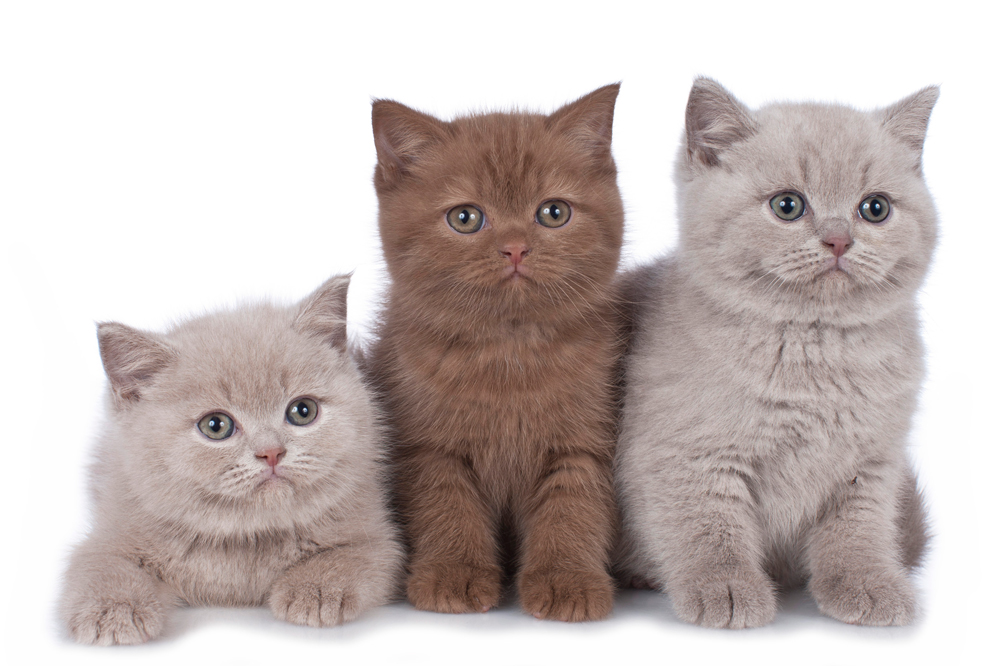
Breeders With Currently Available Kittens
All The Cat Breeds
- Abyssinian
- American Bobtail
- American Curl
- American Shorthair
- American Wirehair
- Balinese
- Bengal
- Birman
- Bombay
- British Shorthair
- Burmese
- Burmillia
- Charteux
- Chausie
- Colorpoint Shorthair
- Cornish Rex
- Devon Rex
- Donskoy
- Egyption Mau
- European Burmese
- Exotic
- Havana Brown
- Highlander
- Himalayan
- Japanese Bobtail
- Khao Manee
- Korat
- LaPerm
- Lykoi
- Maine Coon
- Manx
- Minuet / Napolean
- Munchkin
- Norwegian Forest Cat
- Ocicat
- Oriental Longhair
- Oriental Shorthair
- Persian
- Peterbald
- Pixie Bob
- Ragamuffin
- Ragdoll
- Russian Blue
- Savannah
- Scottish Fold
- Scottish Straight
- Selkirk Rex
- Seychellois
- Siamese
- Siberian
- Singapora
- Snowshoe
- Somali
- Sphynx
- Thai
- Tonkinese
- Toyger
- Turkish Angora
- Turkish Van

